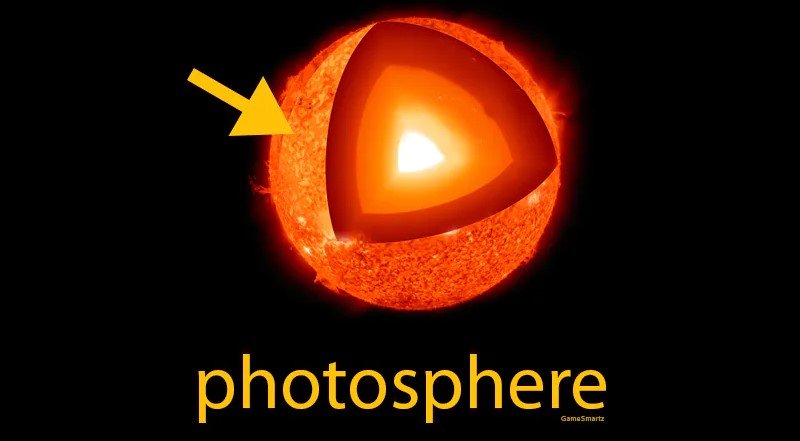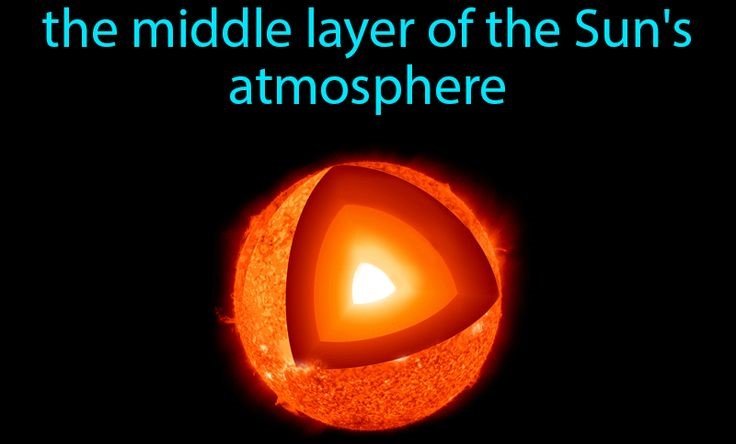How does the Sun produce light? At the deep of a sun’s core there atoms fuse and as a result it creates light and energy. Fusion reaction occurs in the sun’s innermost core, when two atoms merge, releasing energy and light in the process. The Sun, a massive ball of gas at the center of our solar system, is the ultimate source of light and energy for Earth and all its inhabitants. Understanding how the Sun produces light is a fundamental question that delves into the heart of astrophysics and nuclear science. This article will explore the intricate processes that allow the Sun to shine so brightly, providing warmth and life to our planet.
Understanding the Sun’s Structure

To comprehend how the Sun produces light, we must first understand its structure and composition. The Sun is made up of several distinct layers, each playing a crucial role in its function as a light source.
Layers of the Sun
1. Core

- Location and Composition:
The core is the innermost layer of the Sun, where the temperature reaches around 15 million degrees Celsius (27 million degrees Fahrenheit). It is primarily composed of hydrogen and helium, where nuclear fusion occurs. - Function:
The core is the powerhouse of the Sun, where nuclear reactions convert hydrogen into helium, releasing energy in the form of light and heat.
- Radiative Zone:
- Location:
Surrounding the core, the radiative zone extends outwards, occupying about 70% of the Sun’s radius. - Function:
In this layer, energy is transferred outward by radiation, with photons traveling through the dense gas. This process takes an incredibly long time, as photons are absorbed and re-emitted numerous times.
2. Convective Zone:

- Location:
Beyond the radiative zone, the convective zone extends to the Sun’s surface. - Function:
Here, energy is transported by convection, with hot plasma rising towards the surface, cooling, and sinking back down to be reheated.
3. Photosphere

- Location:
The photosphere is the Sun’s visible surface, approximately 400 kilometers thick. - Function:
It emits the light we see from Earth and contains sunspots, which are cooler, darker areas caused by magnetic activity.
4. Chromosphere

- Location:
Above the photosphere, this layer is about 2,000 kilometers thick. - Function:
It contributes to the Sun’s light emission and can be seen during solar eclipses as a reddish rim around the Sun.
5. Corona

- Location:
The outermost layer of the Sun, extending millions of kilometers into space. - Function:
The corona is visible during a solar eclipse as a glowing halo and is the source of solar wind, affecting space weather.
The Sun’s Composition
- Hydrogen and Helium Dominance:
The Sun is primarily composed of hydrogen ((~74%)) and helium ((~24%)), with the remaining (~2%) consisting of heavier elements such as carbon, oxygen, and iron. - Trace Elements:
Elements like carbon, oxygen, nitrogen, neon, and iron contribute to various processes within the Sun, though they are present in minimal quantities compared to hydrogen and helium.
How does the Sun produce light? The Process of Nuclear Fusion
Nuclear fusion is the heart of the Sun’s light production, a process that converts hydrogen into helium, releasing immense energy.
What is Nuclear Fusion?
Nuclear fusion is the process by which two light atomic nuclei combine to form a heavier nucleus, releasing energy. In the Sun’s core, this involves the fusion of hydrogen atoms into helium.
- Basics of Fusion Reactions:
Fusion occurs when temperatures and pressures are sufficiently high to overcome the repulsive forces between atomic nuclei, allowing them to collide and bond. - The Role of Gravity in Fusion:
Gravity plays a crucial role in maintaining the Sun’s core conditions, with the immense gravitational pull compressing the core to sustain the pressure and temperature needed for fusion.
The Proton-Proton Chain Reaction
The primary fusion process in the Sun is the proton-proton chain reaction, responsible for the Sun’s energy output.
- Steps in the Fusion Process:
- Proton-Proton Collision:
Two hydrogen nuclei (protons) collide, forming deuterium, a heavier isotope of hydrogen, along with the emission of a positron and a neutrino. - Deuterium and Proton Collision:
The newly formed deuterium nucleus collides with another proton, producing helium-3 and emitting gamma rays. - Helium-3 Fusion:
Two helium-3 nuclei combine to form helium-4, releasing two protons and additional energy.
- Energy Release and Light Production:
The fusion reactions convert a small amount of mass into energy, as described by Einstein’s equation (E=mc^2). This energy, primarily in the form of gamma rays, eventually escapes the Sun as light.
The Role of the Core in Fusion
The Sun’s core is the only place where fusion occurs, as it provides the necessary conditions for these reactions.
- Conditions Necessary for Fusion:
- Temperature:
Around 15 million degrees Celsius to enable proton collisions. - Pressure:
High pressure from gravitational forces to sustain the core’s density. - The Sun’s Core Temperature and Pressure:
The core’s extreme heat and pressure allow hydrogen nuclei to overcome electrostatic repulsion, facilitating fusion and energy release.
The Journey of Photons from Core to Surface
Once energy is produced in the core, it embarks on a long journey to reach the Sun’s surface and beyond.
Radiative Zone: Photon Transfer
- How Energy Moves Through the Radiative Zone:
In the radiative zone, energy is transported outward by photons, which are repeatedly absorbed and re-emitted by particles in a process known as the random walk. - The Random Walk of Photons:
Photons take thousands to millions of years to traverse this layer, zigzagging as they collide with particles, gradually losing energy and shifting towards the visible spectrum.
Convective Zone: Energy Transport
- Convection Currents and Heat Transfer:
In the convective zone, energy transfer occurs through convection currents, where hot plasma rises to the surface, cools, and sinks back down. - Movement to the Surface:
This churning motion efficiently transports energy to the photosphere, leading to granulation patterns on the Sun’s surface.
Emission of Light from the Sun’s Surface
The Sun’s surface layers are where light is finally emitted and reaches Earth.
Photosphere: The Visible Surface
- How Light is Emitted:
The photosphere emits light and heat as the plasma cools and releases energy, forming the Sun’s bright appearance. - Types of Light and Radiation:
The photosphere emits various light types, including visible light, ultraviolet (UV) rays, and infrared radiation, contributing to the Sun’s full spectrum.
Chromosphere and Corona
- Additional Light Production:
The chromosphere and corona emit UV and X-rays, with temperatures in the corona reaching millions of degrees Celsius, contributing to solar phenomena like flares. - Solar Flares and Coronal Mass Ejections:
Solar flares are intense bursts of radiation resulting from magnetic activity, while coronal mass ejections (CMEs) are massive eruptions of plasma and magnetic fields, affecting space weather.
The Sun’s Spectrum and Light Types
The Sun emits a wide range of light and radiation, forming its complete spectrum.
Visible Light and the Electromagnetic Spectrum
- Spectrum Composition:
The Sun’s spectrum includes visible light (ROYGBIV – Red, Orange, Yellow, Green, Blue, Indigo, Violet), ultraviolet (UV), infrared, and other types of radiation. - UV, Infrared, and Other Types of Radiation:
- Ultraviolet (UV) Rays:
Affect Earth’s ozone layer and biological processes. - Infrared Radiation:
Contributes to Earth’s heat balance and climate. - Radio Waves and X-rays:
Affect communication systems and atmospheric dynamics.
Why Does the Sun Appear Yellow?

- Atmospheric Effects on Sunlight:
The Earth’s atmosphere scatters shorter wavelengths of light (blue and violet), allowing longer wavelengths (yellow and red) to reach the observer, giving the Sun its yellow appearance. - Perception of Sunlight on Earth:
The Sun’s true color is white, as it emits all visible wavelengths, but atmospheric scattering alters its perceived color.
Factors Influencing Light Production
Several factors influence the Sun’s light production and variability.
Solar Activity and Sunspots
- Impact on Light and Energy Output:
Sunspots, dark regions on the photosphere caused by magnetic activity, influence solar radiation and can lead to increased solar activity. - Solar Cycles and Variability:
The Sun undergoes an 11-year solar cycle, with varying sunspot numbers and solar activity levels affecting energy output and space weather.
Magnetic Fields and Solar Phenomena
- Role in Light and Heat Emission:
The Sun’s magnetic field drives solar phenomena, such as flares and prominences, affecting light and heat emission. - Aurora and Magnetic Effects:
Solar activity interacts with Earth’s magnetic field, producing auroras (Northern and Southern Lights) and influencing magnetic environments.
The Importance of the Sun’s Light
The Sun’s light is vital for life on Earth and has broader implications for science and technology.
Support for Life on Earth
- Photosynthesis and Ecosystems:
Sunlight drives photosynthesis, supporting plant life and ecosystems, forming the foundation of food chains. - Climate and Weather Patterns:
The Sun influences Earth’s climate and weather, driving atmospheric dynamics and energy balance.
Technological and Scientific Significance
- Solar Energy and Renewable Resources:
Harnessing solar energy provides sustainable power solutions, reducing reliance on fossil fuels. - Astronomical Studies and Observations:
The Sun serves as a model for studying other stars and celestial phenomena, contributing to our understanding of astrophysics.
Conclusion
The Sun’s light production is a complex process rooted in nuclear fusion and intricate energy transport mechanisms. From the core’s fusion reactions to the emission of light at the surface, the Sun stands as a vital energy source for our planet and beyond. Its role in supporting life, driving climate, and advancing scientific understanding underscores its significance in the cosmic tapestry.
FAQs
- What is the primary process by which the Sun produces light?
The Sun produces light primarily through nuclear fusion in its core, where hydrogen nuclei fuse to form helium, releasing energy in the form of light and heat. - How long does it take for light to reach Earth from the Sun?
It takes approximately 8 minutes and 20 seconds for light to travel from the Sun to Earth, covering a distance of about 93 million miles (150 million kilometers). - Can the Sun’s light production change over time?
Yes, the Sun’s light production can vary due to solar cycles, magnetic activity, and changes in sunspot numbers, affecting solar output and space weather. - What would happen if the Sun stopped producing light?
If the Sun stopped producing light, Earth would quickly cool, leading to the collapse of ecosystems, frozen oceans, and the inability to sustain life as we know it. - How does the Sun’s light affect Earth’s climate?
The Sun’s light drives Earth’s climate by heating the atmosphere, influencing weather patterns, and supporting photosynthesis, forming the basis for ecological systems.

